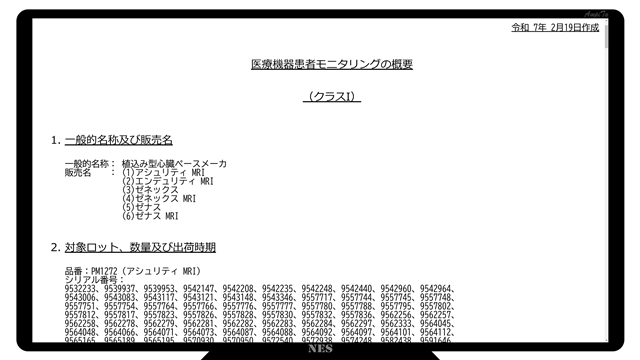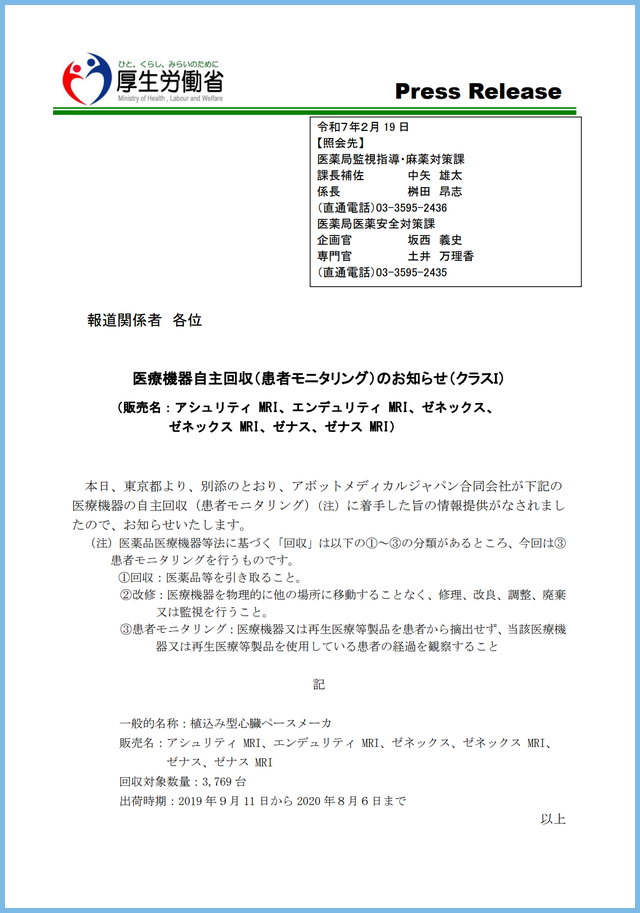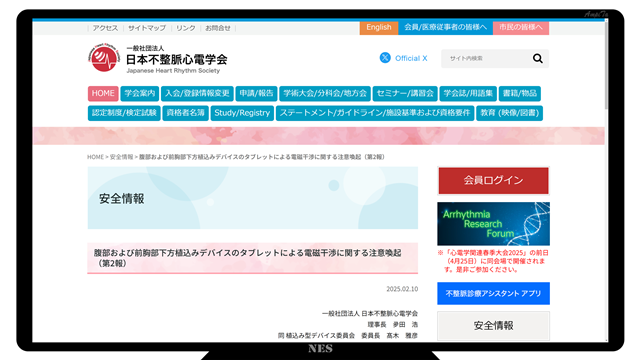The last Class I that came out on March 7th was “Patient Monitoring” of the heart pacemaker.
The Class I announced today was also a cardiac pacemaker’s “patient monitoring”.
[Reference] PMDA: Overview of Medical Device Patient Monitoring
[Reference] Class I collection zero has passed 500days
Ministry of Health, Labour and Welfare Press
[Reference] Ministry of Health, Labour and Welfare: Notice of Medical Device Voluntary Recovery (Patient Monitoring) (Class I), Reiwa 7th February 19th Press Release
[Reference] Notice of PMDA Medical Device Voluntary Recovery (Patient Monitoring) (Class I), Ministry of Health, Labour and Welfare
Medical Device Recalls
Medical device recalls include recovery, refurbishment and patient monitoring. It is classified as I, II, and III according to the degree of danger.
| Class I | The use of the product, etc., is a situation in which serious health damage or death can be a cause of serious health damage or death. |
| Class II | The use of the product, etc., may cause temporary or medically curable health hazards, or a situation in which serious health hazards such as the use of the product are largely unthinkable. |
| Class III | The use of the product is a situation that is unlikely to cause health damage. |
Dangerous, but safe.
Recalls can be dangerous because they involve some kind of malfunction in themselves.
However, it cannot be said that it is dangerous in general. The medical device repair information issued two days ago was that there was an error in the barcode label of the dialysis machine. Since it is a product that is installed and used repeatedly, it is not a mistake to take it and open it and use it, and the barcode is not something that is rarely used, and it may be finished without ever being used. The fact that things that were shipped a few years ago will be noticed by now, it is possible that the barcode was not used in the shipping management of the manufacturer.
The content of the patient monitoring in Class I this time is important for life and health, so it is dangerous to a certain extent.
However, it is not known, but it is widely known to predict danger, and if the danger increases, it seems that it will be a response while assuming invasive acts such as removing it.
Is it more dangerous not to be a recall?
Last week, a warning about pacemakers was issued at the conference. Mr. Okita, who is mentioned in the reference, is a clinical engineer at Hyogo Prefectural Children’s Hospital, but I am also a person who is also involved.
The content of the presentation is something like radio interference by a tablet, something like radio wave interference by a tablet, something electromagnetic wave or something, the pacemaker may make unexpected movements.
“Magnet response” is not abnormal because it is a product specification. It is not a recall target because there are no abnormalities in the product.
There was information from the academic society, but since it is information that does not come out from the Ministry of Health, Labour and Welfare and PMDA, I think it is a delicate point whether it is safe considering the publicity.
Being involved with people
In any case, it is natural that there are some defects because humans are involved.
Even if the danger is known, it is not necessary to forget to work for twenty-four hours, so I think that medical professionals may forget.
I hope you don’t blame me there.





